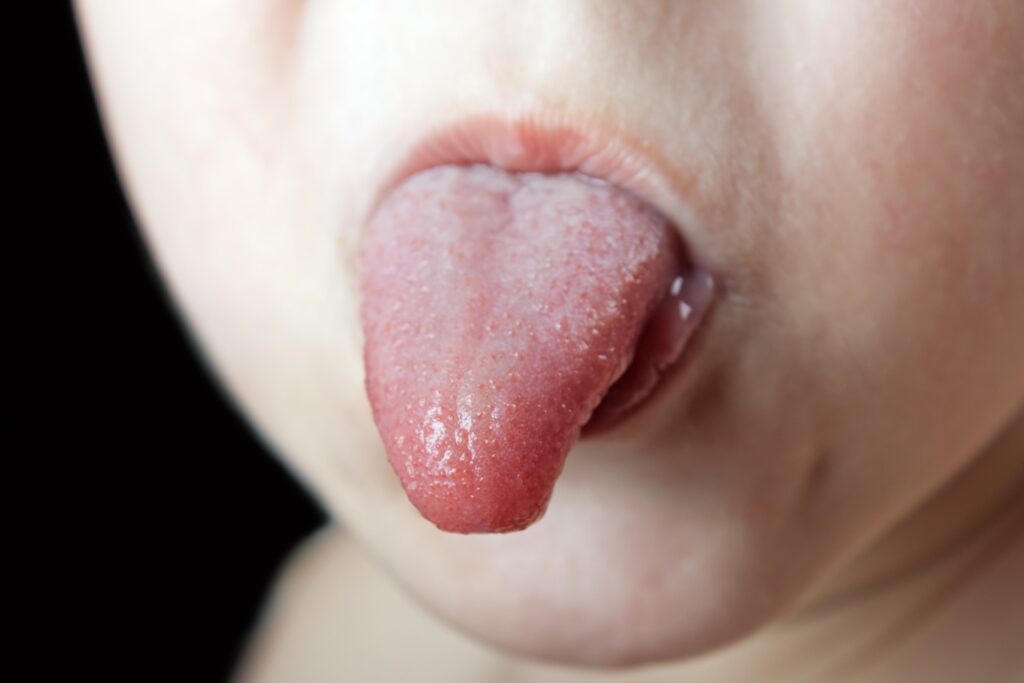While brushing and flossing remove plaque and bacteria from the surface of your child’s teeth, in between their teeth, and along their gum line, have you ever wondered where else bacteria can accumulate? Besides on the teeth and along the gum line, another common location for oral bacteria to accumulate is on the tongue. However, many people don’t realize that their tongue may also need daily oral care. This raises the question, should your child brush their tongue?

The human tongue is a muscular organ that is responsible for manipulating food while chewing and swallowing. Of course, the tongue is also coated with taste buds that allow you to taste the flavors of the things you eat and drink. These taste buds cover the surface of the papillae, which are the small bumps all over the tongue.
Since the tongue has several small bumps all over its surface, this provides areas for oral bacteria to hide. While these bumps don’t look like much to the naked eye, at a microscopic level, the tongue has various crevices and elevations that can house bacteria. In some cases, excess bacteria can even make the tongue appear pale or slightly white. This is due to the biofilm that covers the surface of the tongue and houses various bacteria.
Biofilm that covers the tongue is the same biofilm that covers the surface of the teeth, commonly known as plaque. Unlike the teeth, however, the tongue will not decay as a result of being covered in biofilm. Nor will it become infected like the gum tissue. However, excess biofilm on the tongue can lead to bad breath and/or a bad taste in the mouth. It also increases the total amount of bacteria in the mouth, which can increase the risk of tooth decay and gum disease.
For these reasons, brushing your child’s tongue is considered to be beneficial for their oral health. In fact, simply rinsing or using mouthwash is not enough to clean the tongue. This is because mouthwash only kills the bacteria located on the outer layer of the biofilm, leaving all the bacteria underneath unharmed. This means that the bacteria under the surface layer will continue to thrive.

The only way to remove bacteria from the surface of the tongue is to brush the tongue with a toothbrush. To brush your child’s tongue, you will show them to first move the toothbrush back and forth, then side to side across their tongue. They will then rinse their mouth with water to remove the bacteria that the toothbrush has loosened. It is recommended to have your child brush their tongue every time they brush their teeth to prevent excess bacteria from building up. Some children may prefer to use tongue scrapers, however the American Dental Association says there is no evidence that suggests tongue scrapers prevent bad breath.
Overall, brushing your child’s tongue or using a tongue scraper to remove biofilm can help to decrease bacteria and your child’s risk of developing tooth decay and gum disease by reducing the amount of bacteria in the mouth. If you are not sure whether to use a toothbrush or a tongue scraper, you should discuss this with your child’s dentist. In cases where your child still has bad breath after brushing their tongue regularly, you should schedule a dental exam to determine the cause.





